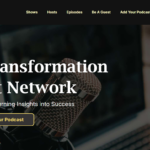What is the new normal? Take a look at these facts and figures.
Video-conferencing and online meetings platform Zoom says its user base grew to 300 million in the last three weeks, a 50% jump from 200 million at the beginning of the month.
Netflix added 15.8 million new subscribers worldwide during the first three months of 2020, more than doubling its growth forecast for the quarter. It was the largest one-quarter growth spurt in the company’s history.
Data from SimilarWeb show desktop and mobile visits to ecommerce sites of Amazon, Walmart, Costco, and Target soared between 28 and 76 percent during the first half of March versus a year ago.
Cloud-computing providers such as AWS, Google, and Microsoft, reportedly sustained a 50% increase in utilization during the past month, as they become the essential link for many people to remain connected with work and families.
Global telco T-Mobile experienced a 60% increase in mobile hotspot usage, an 87% increase in online collaboration tools, and an 85% increase in video game traffic, as reported by Business Insider. Local telcos, on the other hand, record up to over 40% spike in internet traffic during Luzon-wide quarantine.
The new normal is a “digital normal”, i.e. societies and people will permanently and profoundly live, work, and play in a digital world. This is driven by the accelerated digital consumptions of consumers and business customers, which will be sustained even after a vaccine is discovered.
The pandemic will make humanity leapfrog its current cognitive capacity and technological limitations by ten years through a global wave of technology investments. Tech companies and startups will pour in investments in the coming years to make the digital experience of people richer and more immersive.
Developments in multi-sensory design of digital experiences will accelerate. Soon apps and websites can communicate to consumers through taste and smell. This will be coupled with advances in virtual and augmented reality applications in communications, entertainment, and leisure will be commonplace.
As an example just a couple of years ago, scientists from Malaysia experimented with “electric smell” technology capable of conveying odors as well as sights and sounds. “If electric smell pans out, long-distance conversations could one day be far more immersive — enabling you to share with a loved one the aroma of a meal you just prepared, for example, or letting you catch a whiff of the sea from your sister’s beach vacation,” said the report in NBC News.
This may be farfetched and laughable a few years ago, but the dining experience is transforming as we speak. Restaurants resort to deliveries and take-outs through the use of apps. Industry players will be forced to innovate to stand-out in the digital normal by making the dining experience more immersive.
At the heart of technological innovation is the advancement in artificial intelligence (AI). Scientists are already progressing in making AI mimic human emotions and interactions, potentially replacing many human work.
The risk of automation in the business process outsourcing sector is more palpable than ever as a result. “Seeing as you’re working from home and there’s a lag in the service, we’ll use more AI, more chatbots, more automation. That is permanent change, automation will hit that sector very deeply” said Mohandas Pai, former executive at outsourcing groups Infosys as reported by the Financial Times.
With the digital normal, organizations and companies, therefore, will need to pivot their business models, processes, and competencies to take advantage of the digital normal. Digital transformation, as a strategic direction, will be more compelling than ever. Business leaders need to embrace a digital normal mindset to steer their organizations in these turbulent times. They need to learn and understand new emerging consumer and customer behaviours, and tweak their organizational processes to deliver a seamless digital experience.
But the biggest challenge for business leaders is how to accelerate retooling of their employees. They have to find ways how to develop talent internally in the areas of soft and hard skills. Digital skills in AI, machine learning, coding, and analytics are urgently requisite.
But apart from these hard skills, employees need to develop digital normal soft skills, such as empathy, collaboration, and complex problem solving. Employees need to better understand their customers through empathy, they need to collaborate more in a dispersed work-from-home set up, and they need to jointly solve complex problems in the organization and with customers.
The digital normal is here now. We have to act urgently.. now.
This article originally published in Manila Times, April 30, 2020
Tag/s:COVID-19





